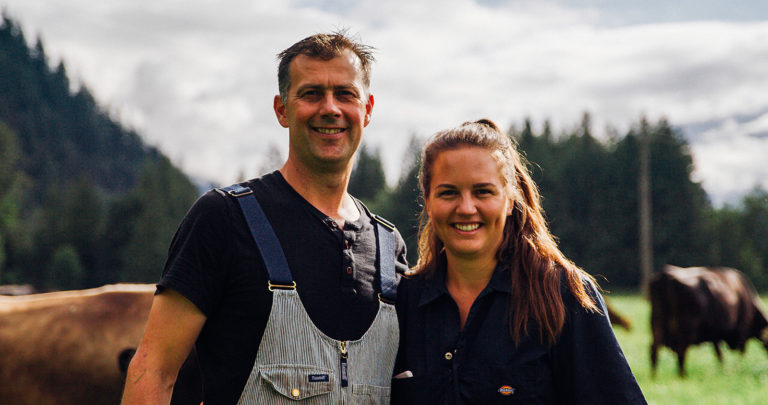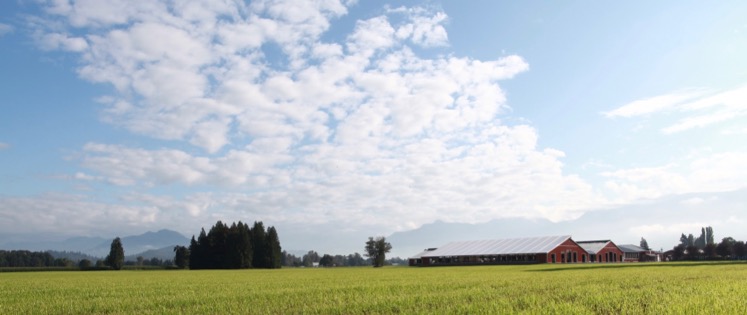Wondering how milk travels from farm to table? Get the inside scoop on how milk is collected from local dairy farms and delivered fresh to a retailer near you!
STEP 1: THE FARM
Dairy cows are milked every day. Depending on the farm, they may be milked twice a day, three times a day, or increasingly (thanks to innovation!) get to choose their own milking schedule.
Cows like consistency in their routines and they hold farmers accountable! When farmers make their way to the barn for morning milking—sometimes as early as 3:00 a.m.—they often find cows waiting for them at the gate. How’s that for a lesson in punctuality!
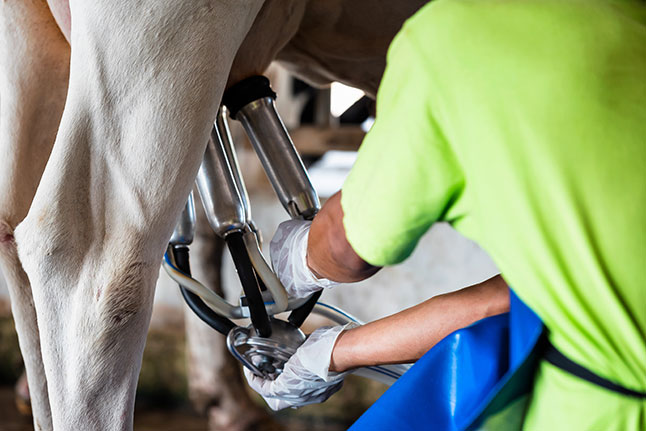 |
| A farmer milking a cow using a milking machine. |
STEP 2: THE PICK UP
On each farm, fresh milk is stored in a temperature regulated bulk tank. Every other day, a dairy truck goes to the farm, picks up the milk, and delivers it to the processing plant. Sounds simple, right?
You may be surprised to learn that the act of picking up milk from farms is the first of many checks to safeguard public health. The milk truck driver is a licensed milk grader, who inspects the bulk tank to make sure milk is cold (below 4°C), smells fresh and looks clean. He or she takes a sample, which is sent to a certified lab where it is tested to make sure it meets strict food safety standards.
Just how rigorous are these standards? Here are some myth busters about what’s in Canadian milk.
What if the milk sample does not pass the test? Good question. If a farm’s tank of milk fails to meet strict standards, the entire truckload is discarded and the farmer does not get paid. It’s in all farmers best interests to make sure their milk is of the highest quality.
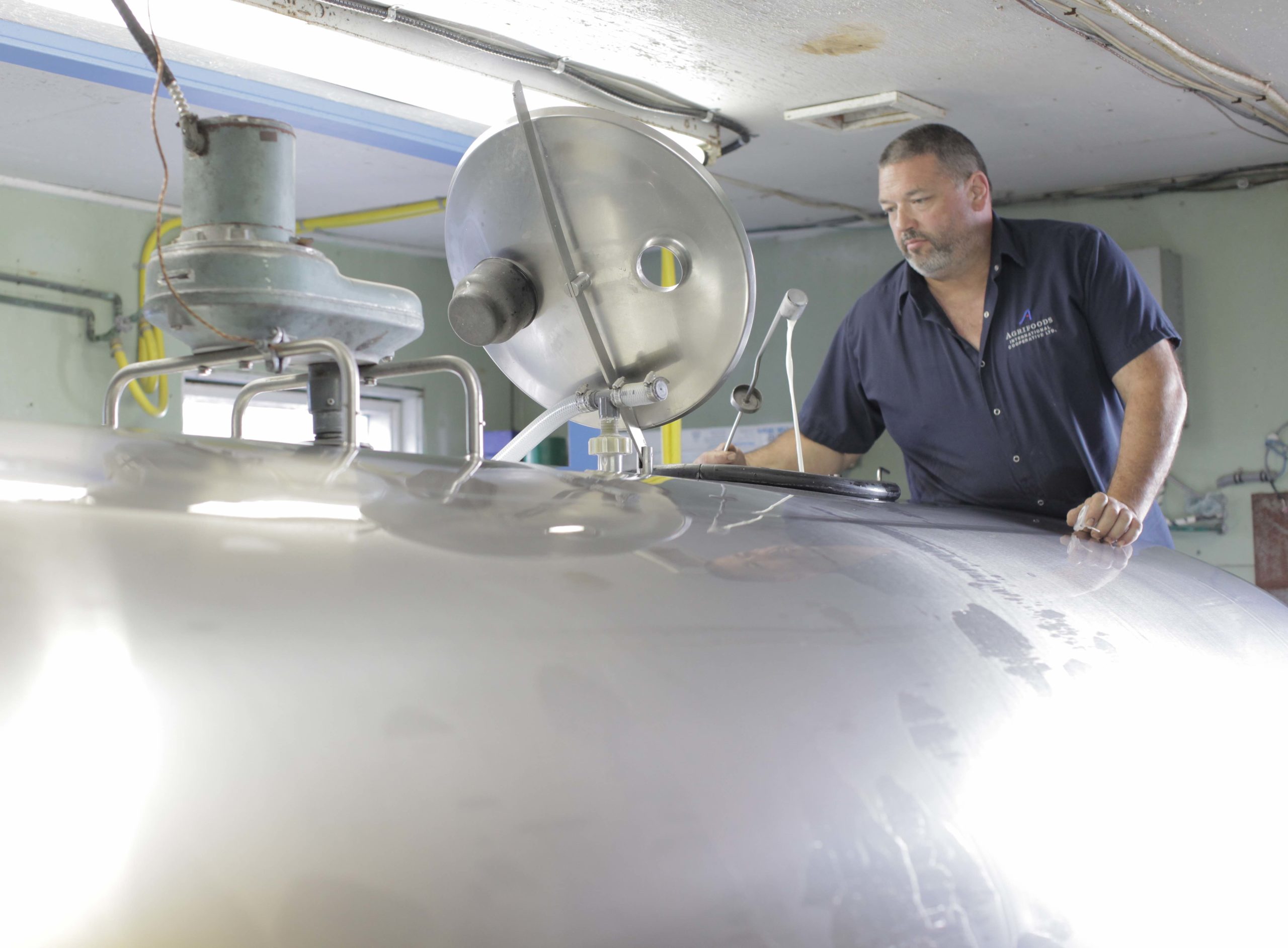 |
| A sample of milk is taken at each farm. |
STEP 3: THE MILK PLANT
Milk is picked up from multiple dairy farms before delivery to the processing plant. Immediately upon arrival, each truckload of milk is tested again to make sure it is 100% free from antibiotics and growth hormones.
Once quality testing is complete, the load of milk is pasteurized. Pasteurization sounds complicated, but really, all it means is that milk is heated and cooled. This process is necessary to kill any bacteria present at low levels, which may pose a risk to human health.
How does it work? The pasteurization process heats the milk up to 72 degrees for 16 seconds and then rapidly cools it down to 4 degrees. Pasteurizers are designed at an angle to increase surface area, allowing heating and cooling to take place quickly. The angle of a pasteurizer also allows milk to be constantly flowing so that it can be held at a consistent temperature.
 |
| Ron shows us a pasteurizer. Notice how it looks similar to a ladder and each layer is tiled slighty. The angle is important to help bring the temperature of milk to a consistent temperature |
After the milk is pasteurized, it goes through a separator. The separator spins milk at an ultra-high-speed (6,000 revolutions per minute) to separate the cream from the milk. Different amounts of cream are then re-combined with the milk to create dairy products with a variety of fat percentages. For example, to make 1% partially skimmed milk, only 1% of milk fat is put back in.
Milk undergoes a process called homogenization, which re-combines milk fat with the other components of milk. Under high pressure, milk is run through a fine mesh. The mesh breaks fat into small particles that remain evenly dispersed throughout the milk. Without homogenization, cream rises to the top of the milk jug!
Once milk has been adjusted for the desired fat percentage and homogenized, it is then sent through stainless-steel pipes across the processing facility to be bottled and sent to the grocery stores. Other milk batches are made into dairy products such as cheese, yogurt, and ice cream.
Have you lost count of how many quality checks take place throughout this process? Just as dairy farmers follow strict quality standards, processors too must carefully test the milk for quality throughout the pasteurization, separation, and homogenization process.
|
|
| After the milk is bottled, it is prepped to be shipped to stores. |
STEP 4: CLEAN-UP
We’re almost done! However, the journey of milk does not end upon bottling products for delivery. After milk has been processed, the milk plant’s tanks and pipes are extensively cleaned.
You may be wondering: who checks to make sure the processing plant is doing their job? Processors must meet government standards to ensure their facilities are clean and that excess air is not incorporated into milk products. The equipment used for testing milk is annually calibrated, and its controls are locked and inspected by a government official.
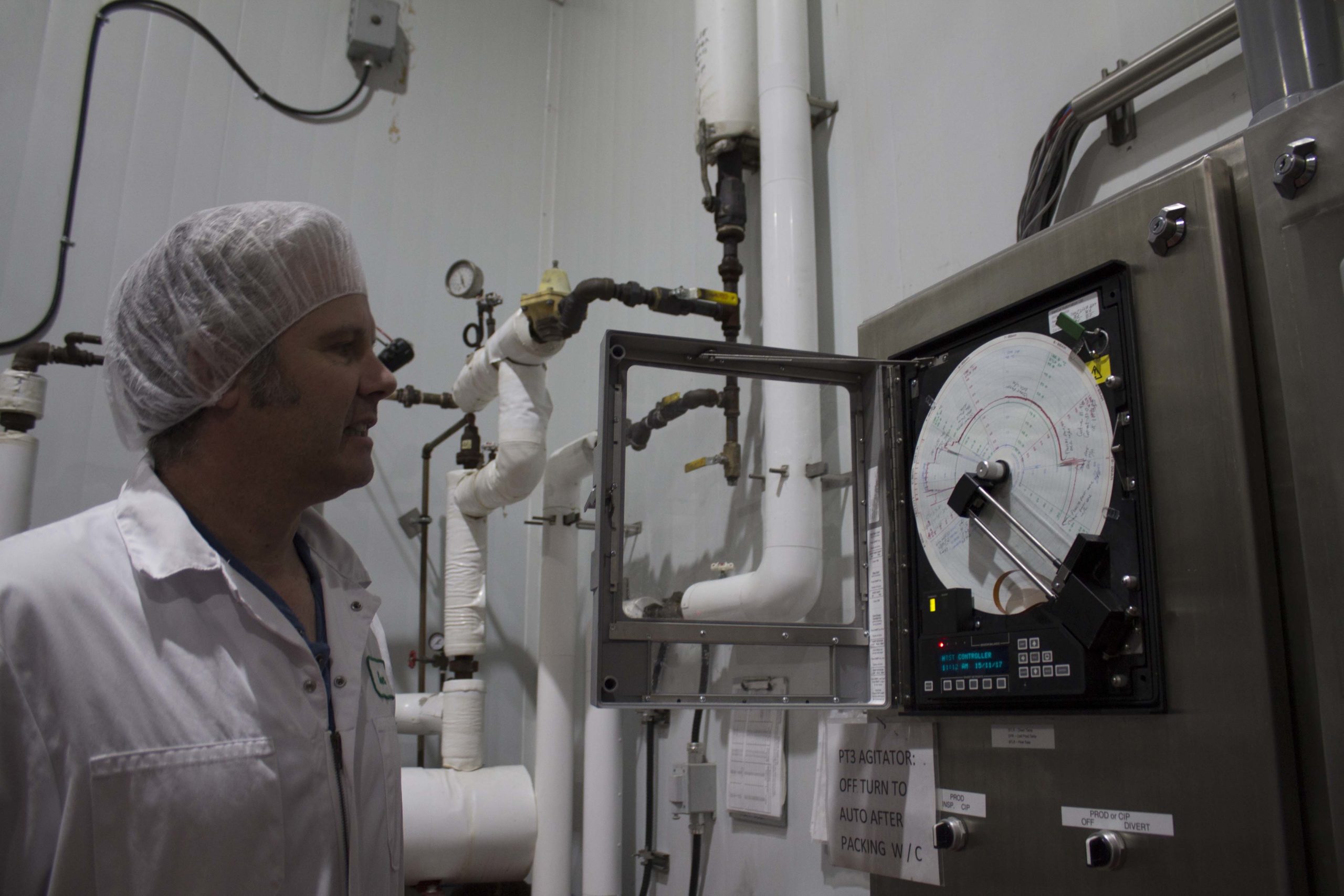 |
|
Our tour guide Ron shows us one of the equipments they use to ensure no excess air is incorporated into the milk during the processing stage. |
So there you have it – milk’s journey from a farm to your local grocer!


